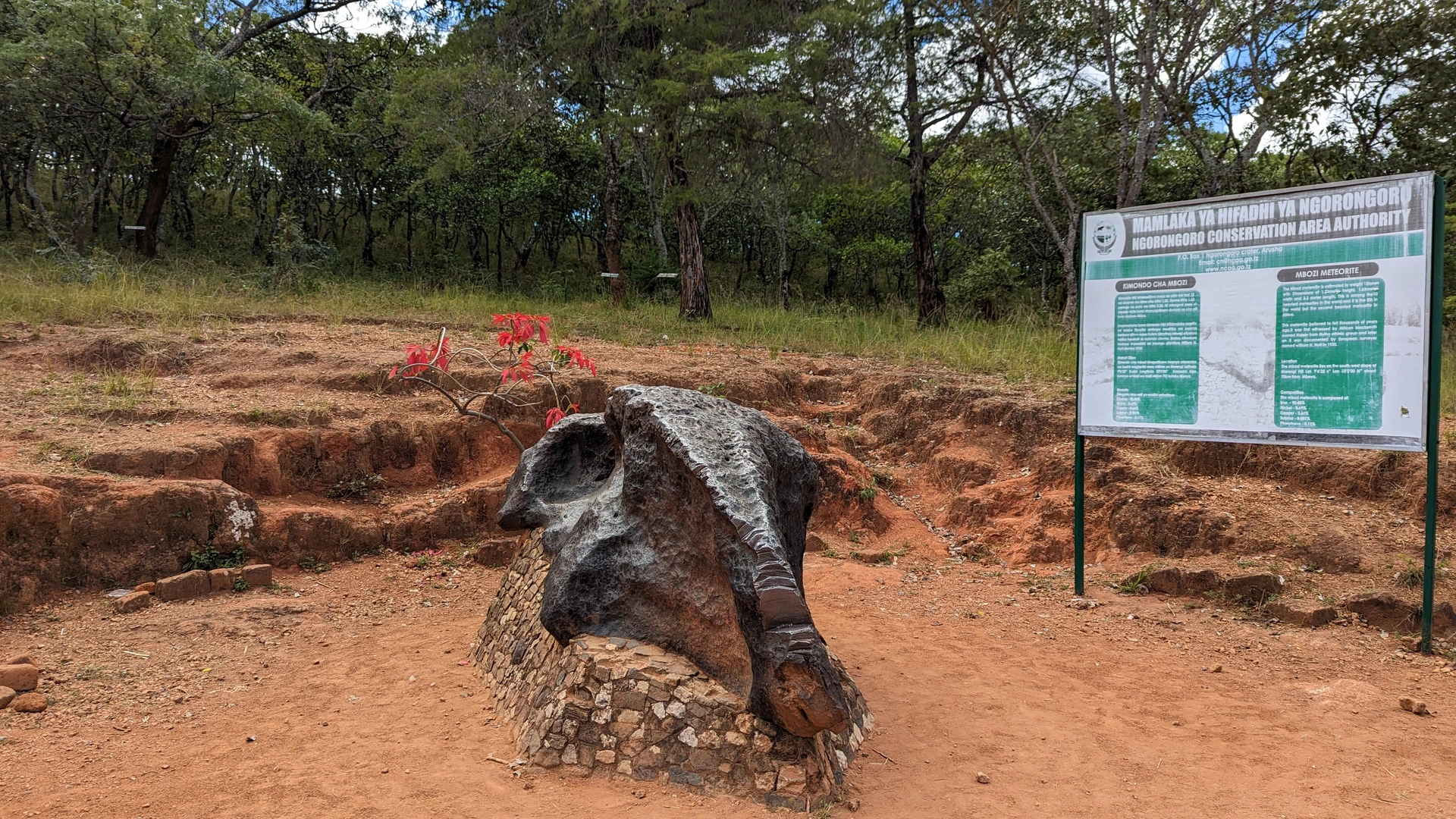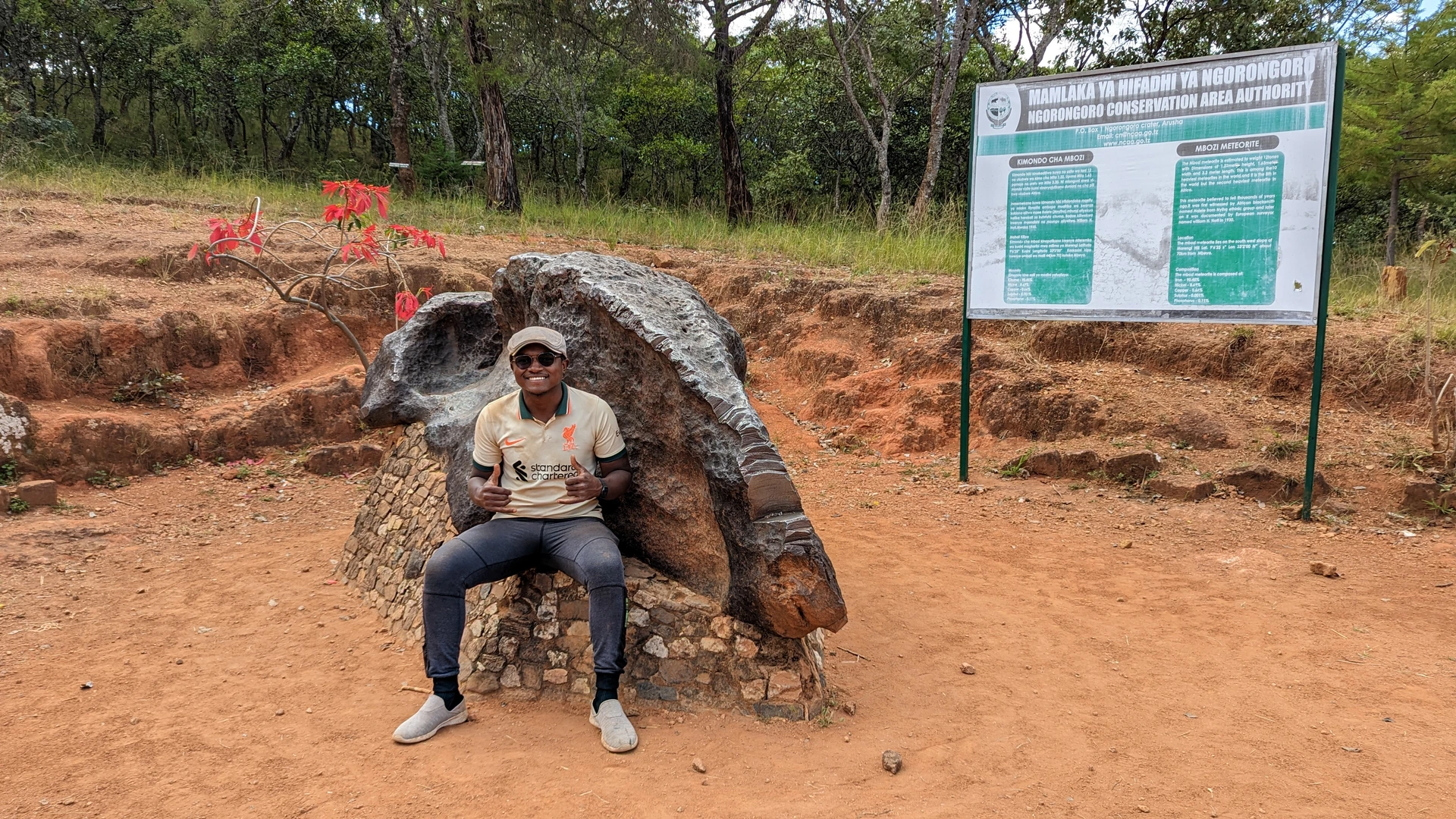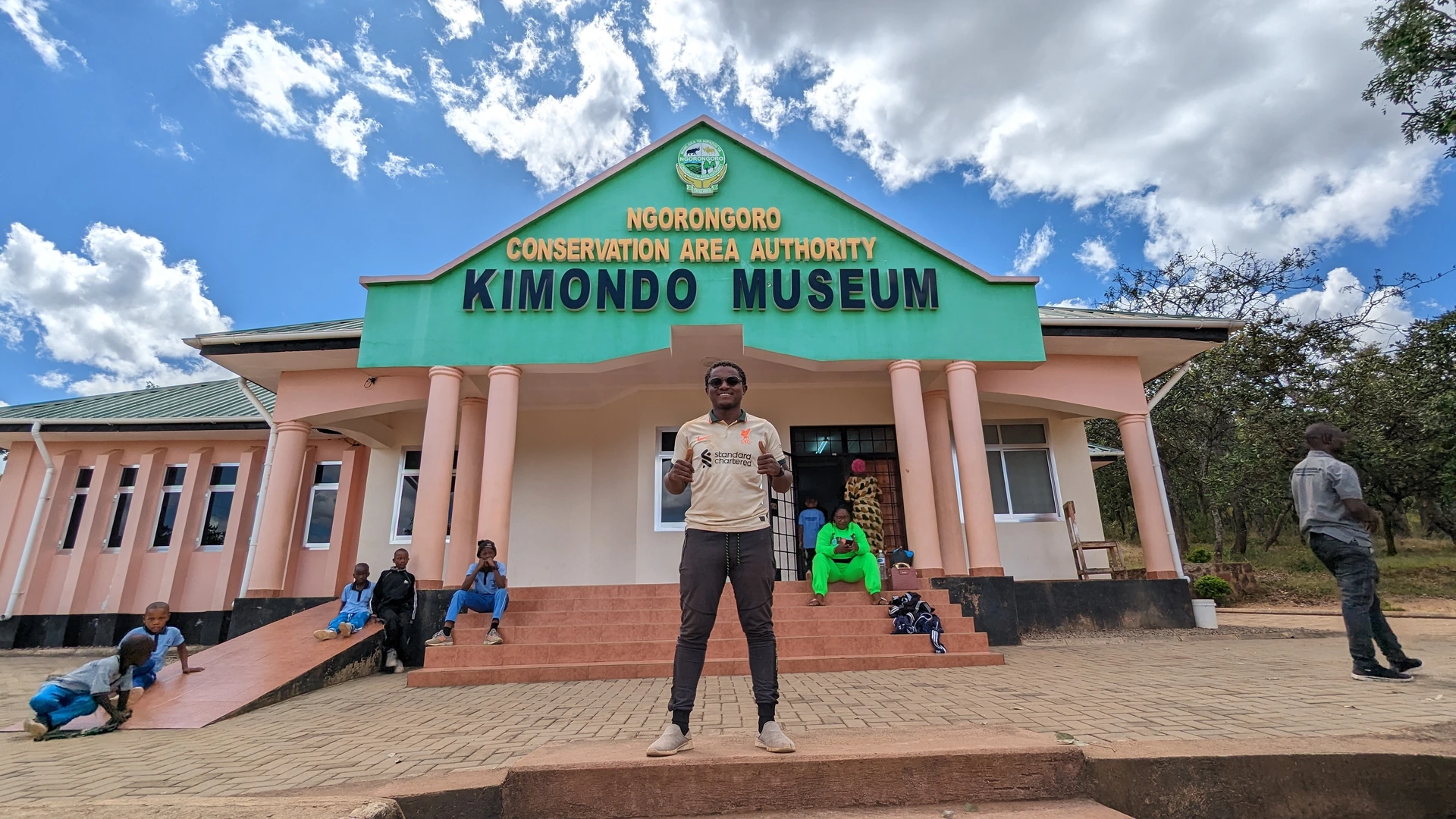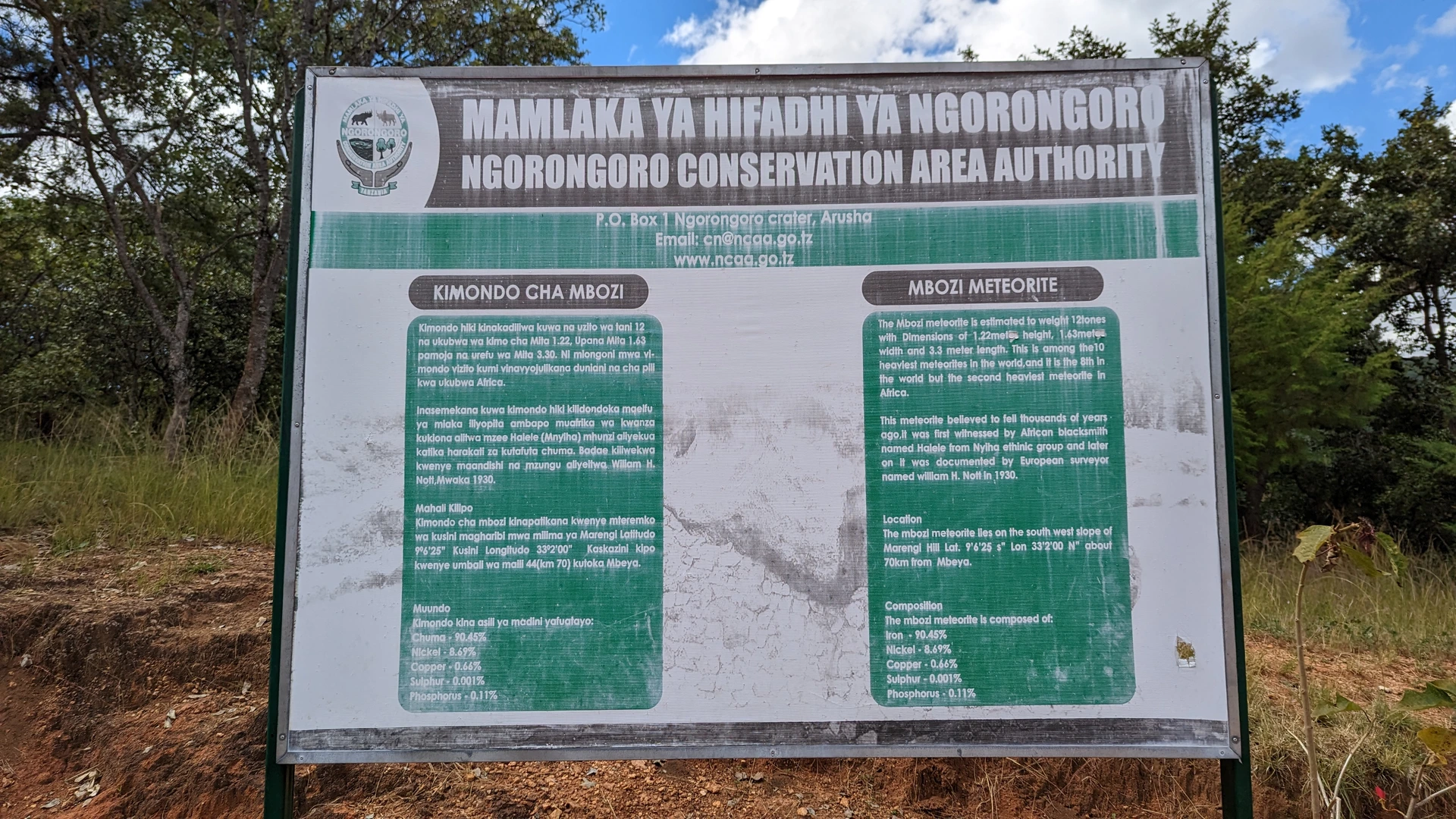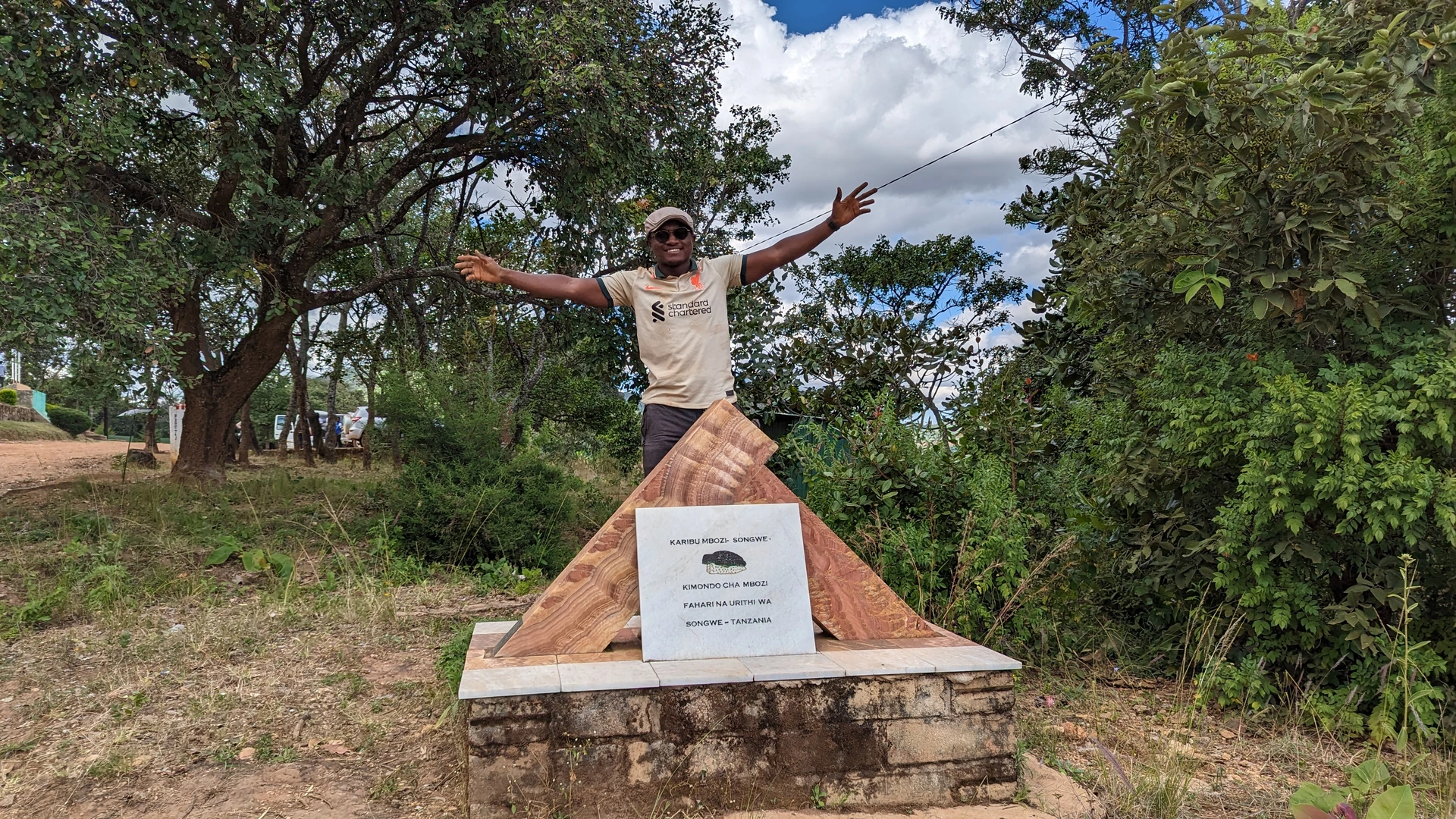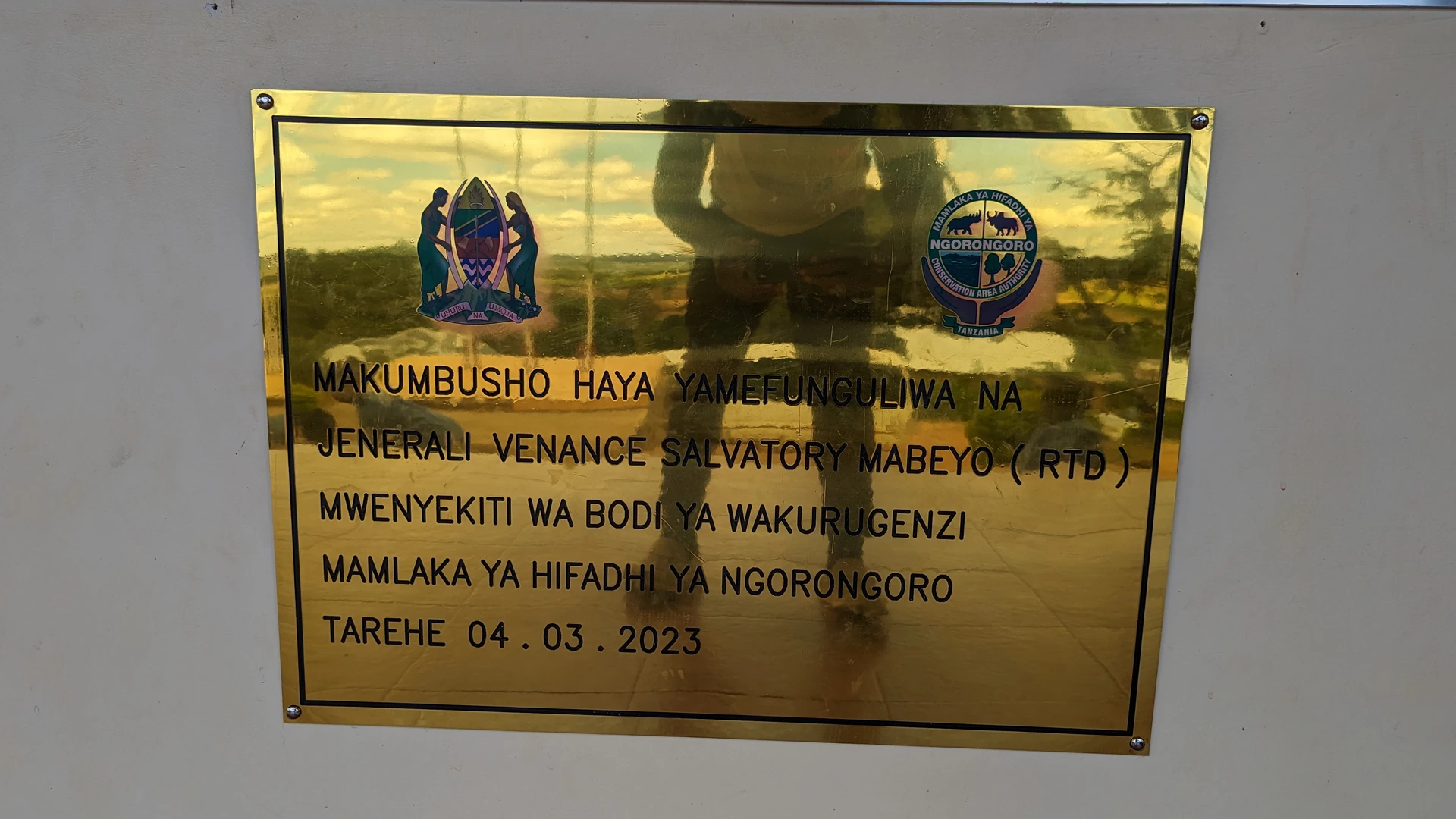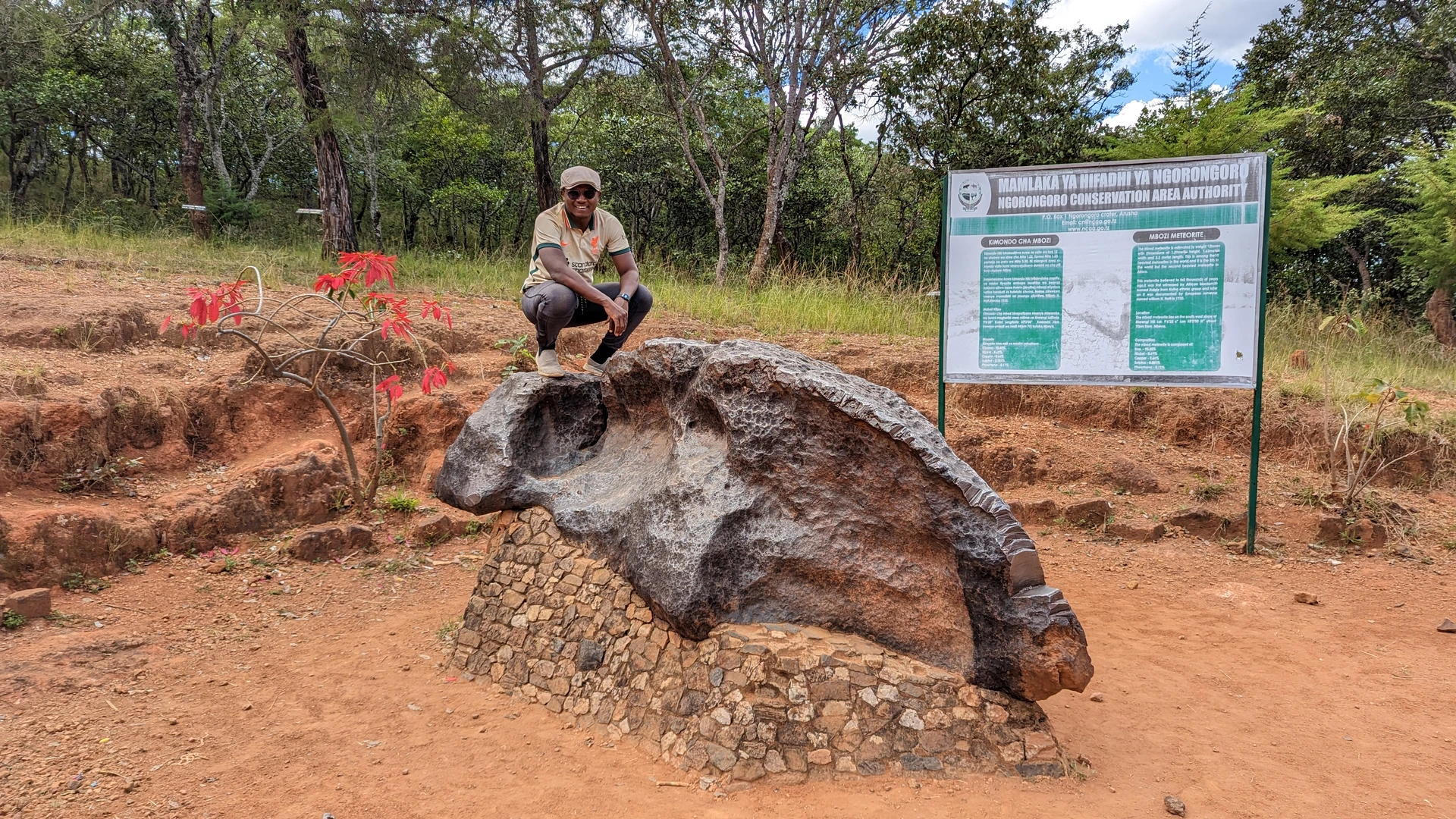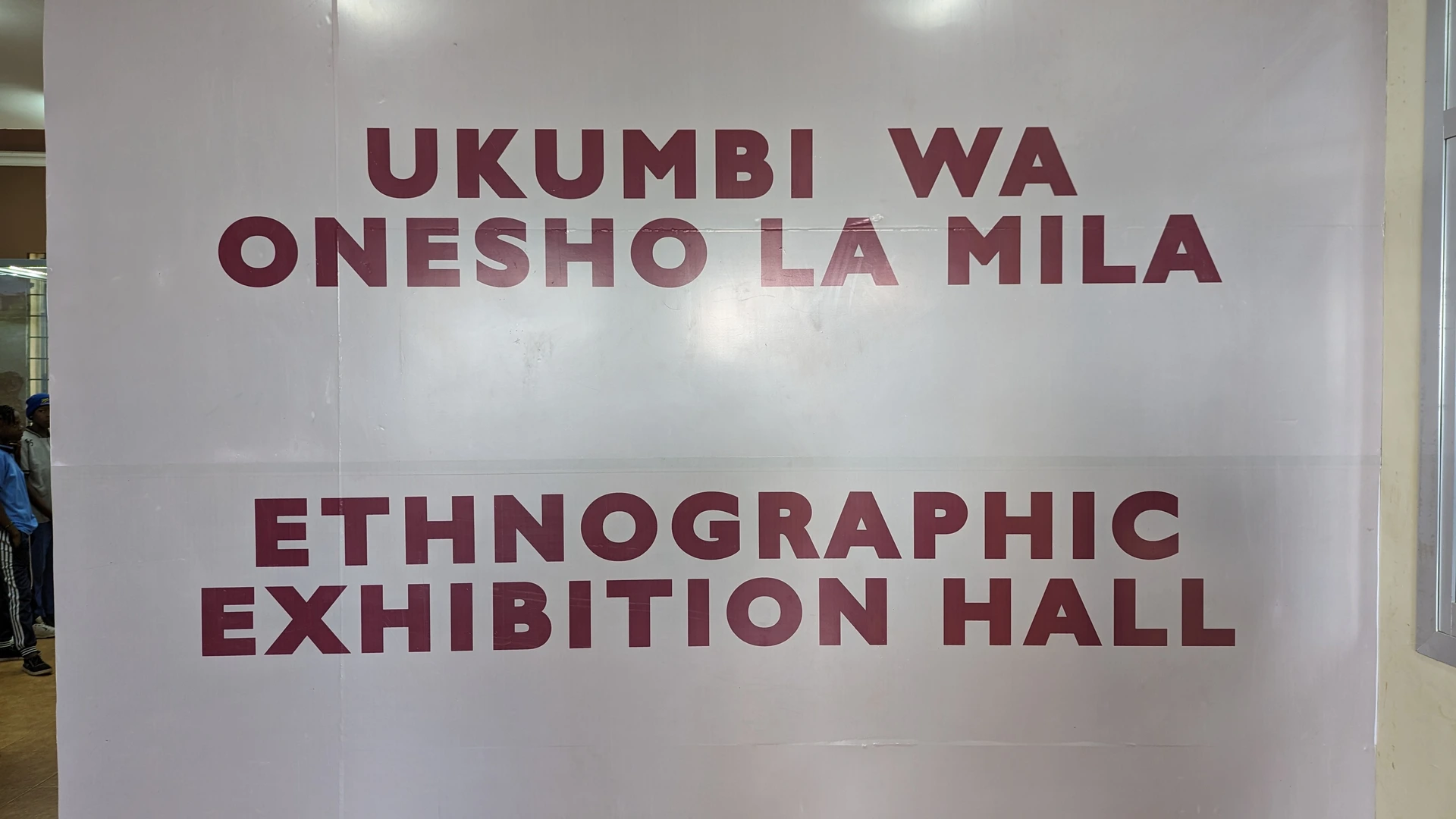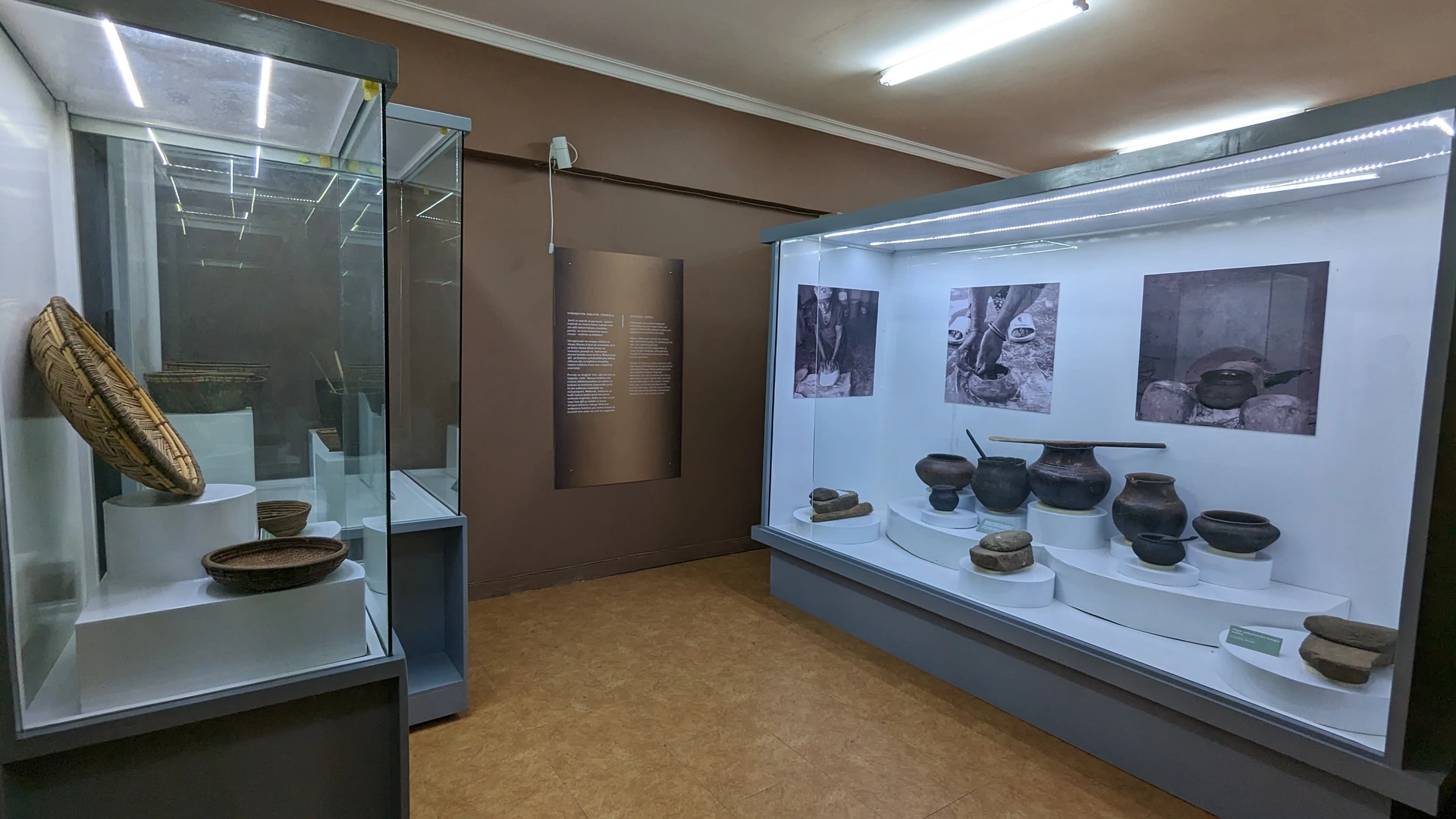Region: Songwe
Access: By road
Attractions: Meteorite, culture exhibition
Activities: Exhibition
Accommodation: Available nearby
Best time to visit: All year round
Useful link: Mbozi Meteorite - Ngorongoro Conservation Area Authority
The Mbozi Meteorite was first witnessed by a blacksmith named Halele of the Nyiha tribe. The meteorite measures 3.3 meters long, 1.2 meters high, and 1.6 meters wide, and weighs an estimated 25 metric tons
The Mbozi Meteorite stands as a testament to the wonders of the universe and the mysteries that lie beyond our planet. This ungrouped iron meteorite is found in the Mbozi village of the Songwe region in Tanzania’s southern highlands Tanzania. It is one of the world’s largest meteorites, estimated to be amongst the ten heaviest globally. The meteorite measures 3.3 meters long, 1.2 meters high, and 1.6 meters wide, and weighs an estimated 25 metric tons
Although first witnessed by a blacksmith named Halele of the Nyiha tribe, and known to locals for centuries, the Mbozi meteorite was not officially discovered until 1930 when it was documented by a European surveyor named William H. Nolf. The meteorite was found on the southwestern slope of Marengi Hill, about 65 kilometers southwest of Mbeya. The meteorite’s top was all that could be seen when it was found. The slope surrounding the meteorite had to be excavated in order to expose the complete object. This left a pillar of earth beneath the meteorite, which was then given concrete reinforcement to act as a foundation plate
The Mbozi meteorite is composed primarily of iron (90%), with about 8% nickel and traces of phosphorous and other elements. It is classified as an ungrouped iron meteorite, which means that it does not fit into any of the other known categories of iron meteorites
The Mbozi Meteorite stands as a testament to the wonders of the universe and the mysteries that lie beyond our planet. This ungrouped iron meteorite is found in the Mbozi village of the Songwe region in Tanzania’s southern highlands Tanzania. It is one of the world’s largest meteorites, estimated to be amongst the ten heaviest globally. The meteorite measures 3.3 meters long, 1.2 meters high, and 1.6 meters wide, and weighs an estimated 25 metric tons
Although first witnessed by a blacksmith named Halele of the Nyiha tribe, and known to locals for centuries, the Mbozi meteorite was not officially discovered until 1930 when it was documented by a European surveyor named William H. Nolf.
The meteorite was found on the southwestern slope of Marengi Hill, about 65 kilometers southwest of Mbeya. The meteorite’s top was all that could be seen when it was found. The slope surrounding the meteorite had to be excavated in order to expose the complete object. This left a pillar of earth beneath the meteorite, which was then given concrete reinforcement to act as a foundation plate
The Mbozi meteorite is composed primarily of iron (90%), with about 8% nickel and traces of phosphorous and other elements. It is classified as an ungrouped iron meteorite, which means that it does not fit into any of the other known categories of iron meteorites
The meteorite is classified as an ungrouped iron meteorite, which means that it does not fit into any of the other known categories of iron meteorites
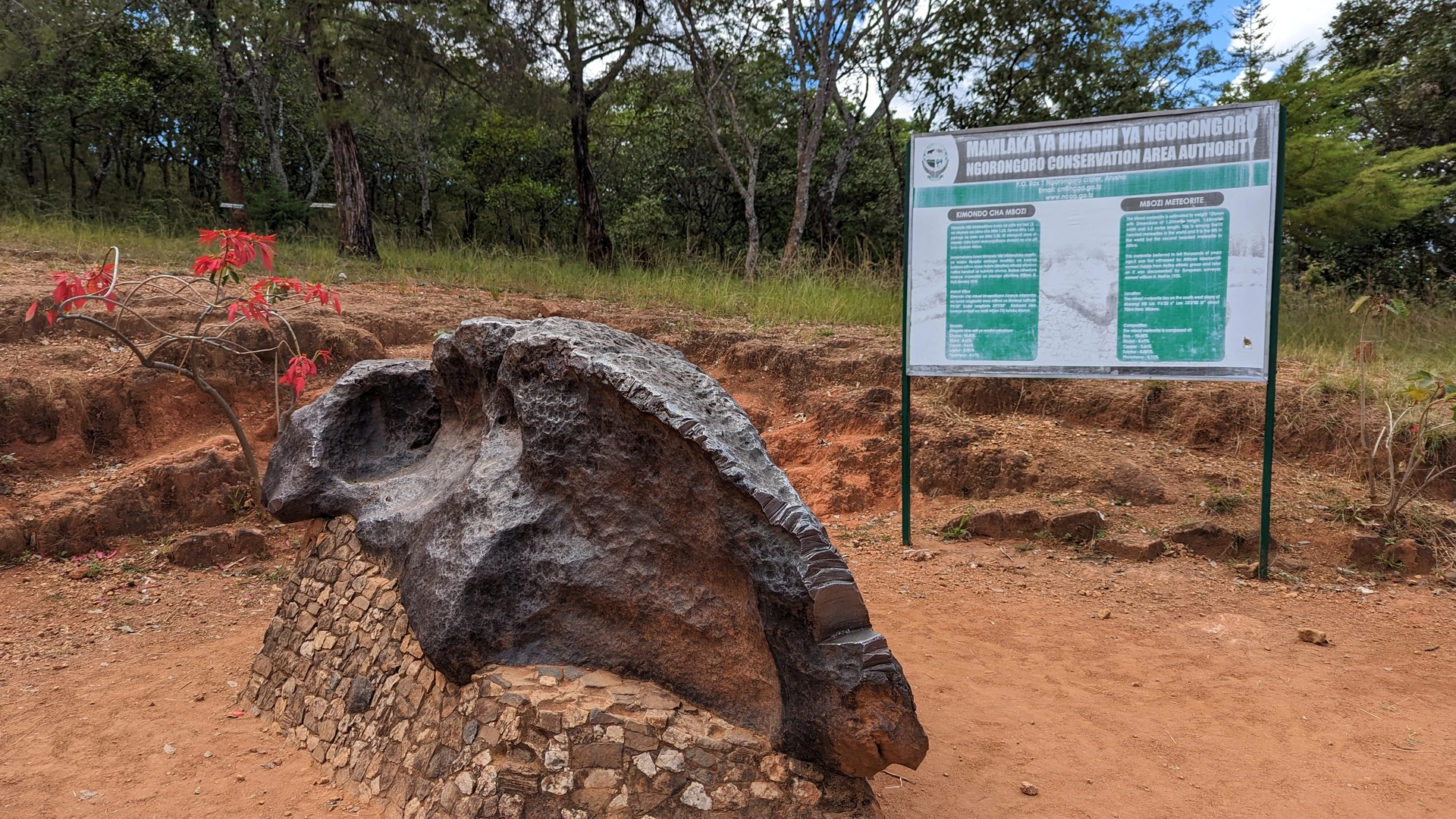
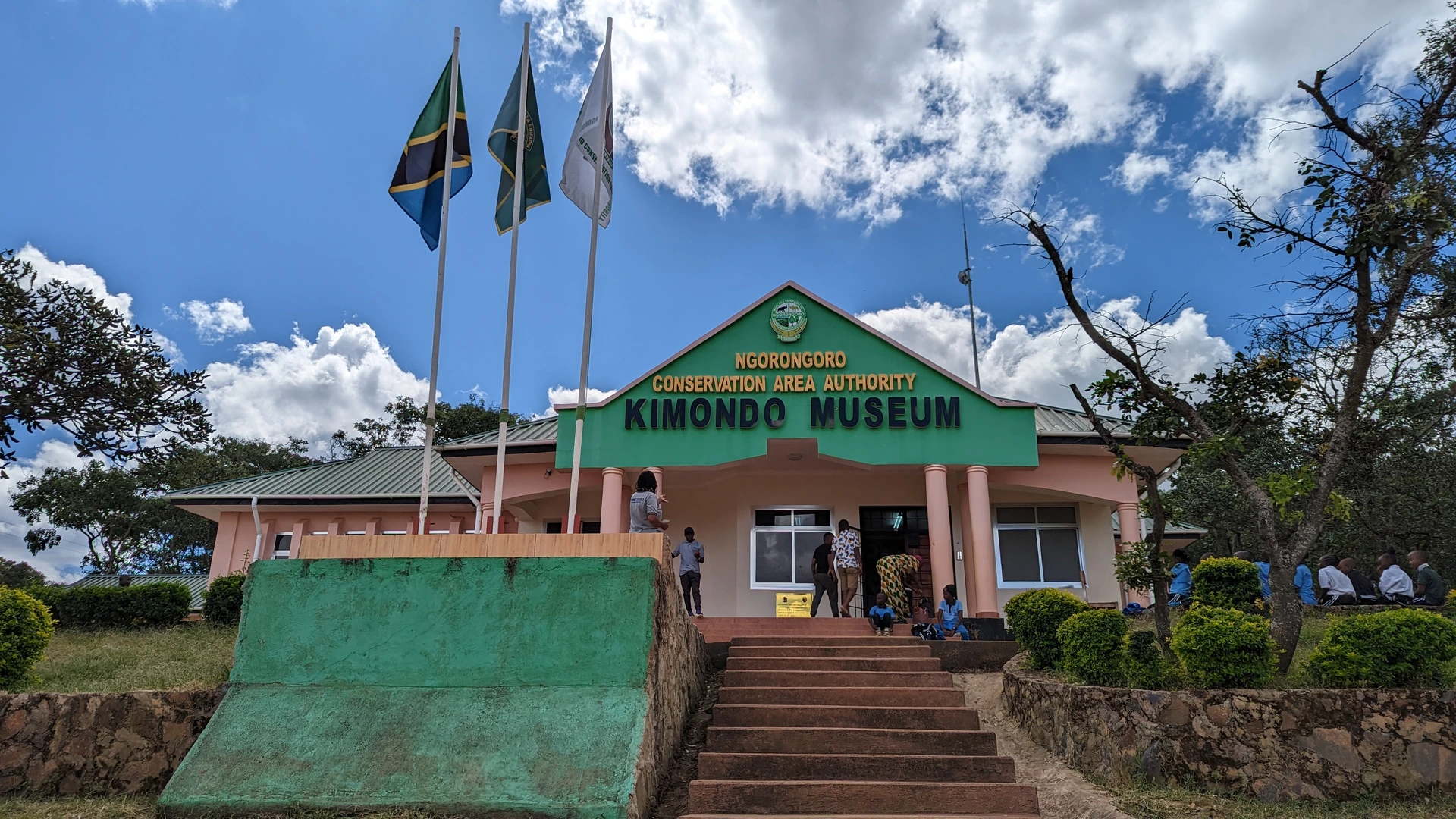
Interesting facts about the Mbozi Meteorite
- It is the second heaviest meteorite in Africa, after the Hoba meteorite in Namibia and the fourth heaviest in the world
- The meteorite is composed of about 90% iron, 8% nickel, and traces of other elements. Because of the iron, the meteorite attracts magnetic materials
- It is the first scientifically recorded meteorite fall in East Africa.
Getting to Mbozi Meteorite
The Mbozi meteorite is located about 880 kilometers southwest of Dar es Salaam. The best way to get there is by car, either from Mbeya (where you may rich by flight, train, or car) or from elsewhere. The drive from Mbeya takes about 1-hour using private transport. There are also public buses, but the journey takes a bit longer. Once you reach Vwawa or Mlowo, small towns off Tunduma road, you will need to take a turn to Ndolezi village where the meteorite is found – about 12 kilometers from the main road. There is a signposted turnoff from the main road that leads to the meteorite.
